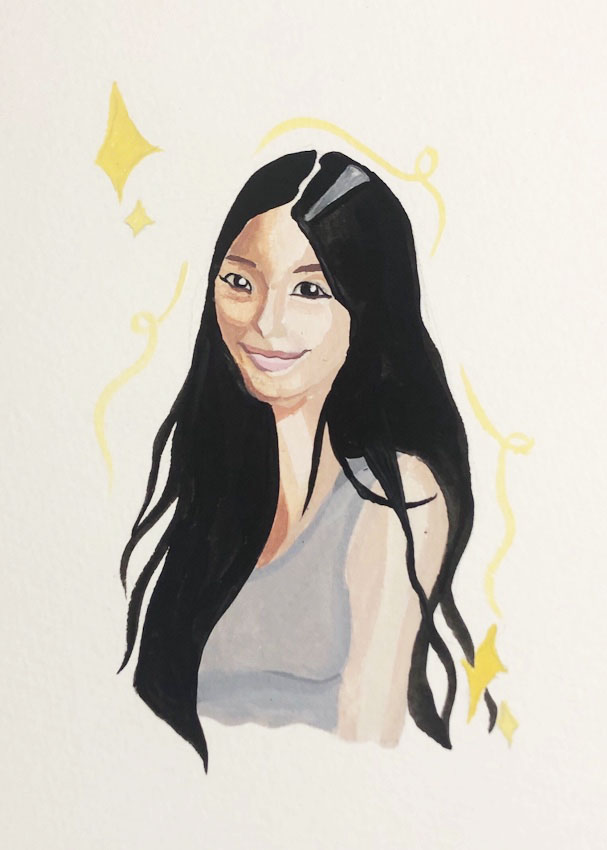Saturday nights in my household consisted of Hunan Broadcasting’s Happy Camp variety show, a coffee table littered with sunflower seeds and the mundane gossip of my mother and her friends. From there, I’d gather intel on where the best xiao long bao is (Nan Xiang was my childhood favorite) and learn that performing at a piano recital would be newsworthy gossip for weeks. But what was etched most deeply in my mind were discussions over which celebrity was the most beautiful, thus informing my earliest understandings of beauty. Fan Bingbing, Li Bingbing or Liu Yifei came up often, suggesting that an Asian or Chinese “epitome of beauty” should have fair skin, a slim face, large eyes and a “tall,” narrow nose — still, they look undeniably Asian. At least, that’s what I had always thought. Until various white people explained to me that complex beauty standards I always thought were Asian could be easily (and dismissively) explained with “oh yeah, they’re just trying to look white.”
I was astonished, confused and even a little angry on hearing the conflation of Asian beauty standards with a simple aspiration to whiteness. I saw this while watching a video from VICE; the interviewer seems to refuse to listen to her informant and instead imposes her own reasoning on why Koreans get plastic surgery. In fact, to simplify such ideas into “they’re all trying to look white” is belittling and dismissive, not to mention incredibly arrogant. It lacks the nuance that we should apply when thinking about complex ideas such as beauty standards and their origins.
As one of the oldest civilizations in the world, China had beauty standards before Europeans began colonizing and spreading (or rather, imposing) their influence upon whoever they encountered. In fact, the favoritism for lighter skin has existed since as early as the Han Dynasty (206 B.C.–220 A.D.) — it was a representation of status, as those who came from wealth would not have to work laboriously in the sun. This beauty standard exists across many Asian cultures, but it has also existed throughout history in many other parts of the world for similar reasons of class-signaling.
In Japan, there is a deep history of paleness being associated with aristocracy. Women in the Nara Period (710–94 A.D.) painted their face with a white powder called “oshiroi.” The ideal at the time (long before Japan “opened” up to the West in 1845) was the classic “Black, White and Red,” referring to black hair, a “white” face, and red lips, a representation of “ideal” Asian beauty (raven hair does not exactly cross my mind when “European” is mentioned). However, this is not to say that western influence has not exacerbated this problem of “colorism.” In the Philippines, which was a former colony of Spain and then the United States, papaya “whitening” soap is widespread — and to a more unfortunate end, so are products that contain toxic levels of mercury.
As for “large, bright expressive eyes,” this beauty ideal is traced back to Ancient China and is prevalent in many Asian societies today. One such example is Japan’s Kawaii (Japanese for “cute”) culture, where the “cute look” of a “childish round face” with “large eyes that signify innocence” is popular. Another is South Korea, where “straight” eyebrows and “puppy eyeliner” reign supreme, signifying youth and achieving a girlish, innocent appearance. There is a clear incongruence with the arched eyebrows and fierce graphic eyeliner shapes popular among women in the West.
While Westernization and colonialism have influenced previous Asian beauty standards, it is dangerous to reduce them to “an emulation of whiteness” and not going beyond “skin-deep” when exploring such complex phenomena. Ignorance of Asian beauty trends suggests that Asians cannot think for themselves (not even enough to set their own beauty standards instead of blindly following the whites). It also insidiously reinforces that there is only one type of “Asian look.” It seems like this mythologized “Asian” look is an almost “Oriental” caricature of what Westerners imagine all Asian people to look like. The reality is that Asia is a vast region home to people of many ethnicities, and therefore, many “looks.”
To assert that certain traits are simply not “Asian” is wrong. For example, around 50 percent of Asians possess this covetable “double-eyelid.” Not to mention that with the “high nose bridge” and double-eyelid ideal, most Asians are trying to look like their (mostly Asian) celebrity idols. As Seoul-based YouTuber Alfred Leung said: “The type of nose bridge that Koreans tend to ask for in a rhinoplasty is markedly different from the ideal Caucasian nose bridge,” furthering that “the misconception that ‘Koreans just want to look white’ is a symptom of Western arrogance and Eurocentrism and has no basis in reality.”
While it’s easy (and often correct) to blame these beauty standards on the questionable legacy Europe has left behind, this approach overlooks the complexities of this issue while doing nothing to fix them. Making beauty standards only about whiteness puts a bandage over the deep-rooted history and impact of Asian beauty standards. To make any strides forward, we must step back and be willing to explore the nuances of this issue. When it comes to Asian beauty standards, beauty is more often in the (mono-lidded) eye than what Eurocentrics think.
Ellen Oscar is an undeclared first year. She can be reached at eoscar@oxy.edu.
![]()



































